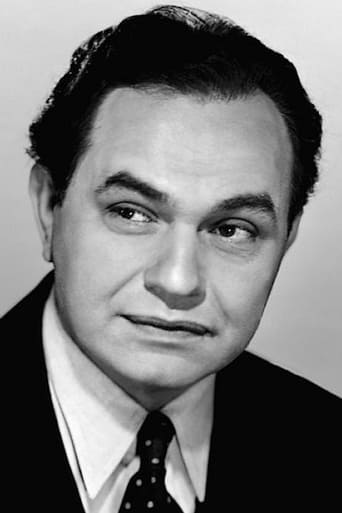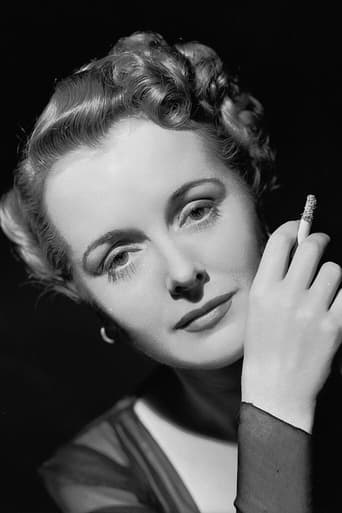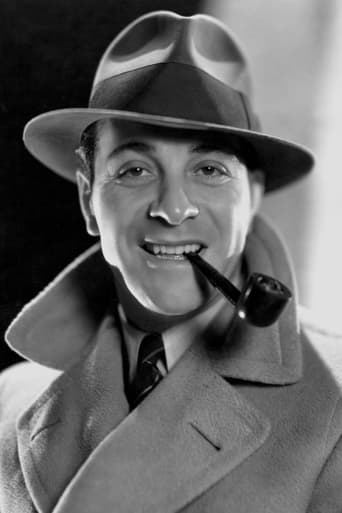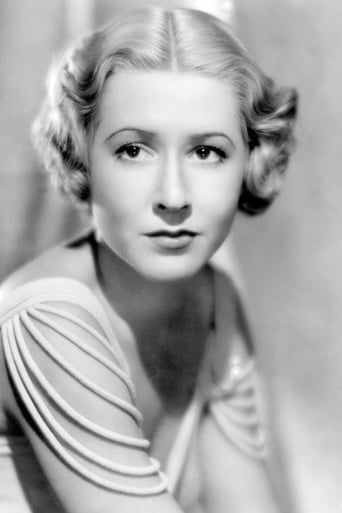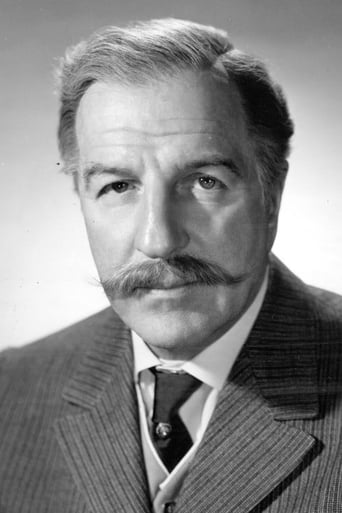Fairaher
The film makes a home in your brain and the only cure is to see it again.
Paynbob
It’s fine. It's literally the definition of a fine movie. You’ve seen it before, you know every beat and outcome before the characters even do. Only question is how much escapism you’re looking for.
Philippa
All of these films share one commonality, that being a kind of emotional center that humanizes a cast of monsters.
Raymond Sierra
The film may be flawed, but its message is not.
JohnHowardReid
Director: ARCHIE MAYO. Screenplay: Tom Reed and Niven Busch. Based on the stage play The Dark Tower by George S. Kaufman and Alexander Woollcott. Photography: Tony Gaudio. Film editor: William Holmes. Art director: John Hughes. Music: Bernard Kaun. Music director: Leo F. Forbstein, conducting The Vitaphone Orchestra. Songs: "Stormy Weather" (Clarke) by Harold Arlen (music) and Ted Koehler (lyrics); "Am I Blue?" by Harry Akst (music) and Grant Clarke (lyrics). Producer: Robert Lord.Copyright 14 July 1934 by First National Pictures, Inc. Released through Warner Brothers Pictures, Inc. New York opening at the Strand: 11 July 1934. U.K. release: 30 March 1935. Australian release: 5 December 1934. 72 minutes. SYNOPSIS: A black-hearted confidence trickster (Louis Calhern) exerts an unbreakable hypnotic influence over his actress wife (Mary Astor).NOTES: The stage play opened on Broadway at the Morosco on 25 November 1933, and, despite excellent reviews, ran a very middling 57 days. "It was a tremendous success," claimed co-author Woollcott, "except for the minor detail that people wouldn't come to see it!" The cast included Basil Sydney (as Damon Wells), Margalo Gilmore, William Harrigan, Margaret Hamilton, Leona Maricle, Margaret Dale, Ernest Milton and Porter Hall. (Sydney also headed the London cast, opposite Edna Best, Martita Hunt, Francis L. Sullivan and Frith Banbury). Sam H. Harris produced, authors Woollcott and Kaufman directed.COMMENT: Here's Edward G. Robinson in his element once more, this time playing a hammy actor who impersonates a French impresario. In the movie, this disguise is supposed to be wholly convincing to the other players, but Ed didn't ring true to me — not for a single second. Mind you, some critics excused Robinson's performance on the grounds that the audience was supposed to be in on the "joke" from the start. But whether the hollowness of the deception was deliberate or not, I still think the movie would have been more entertainingly suspenseful if Robinson and his make-up men had tried a little harder. After all, I have just seen an extremely modest Jack Perrin movie, "Hair-Trigger Casey" (1936), in which a little-known support person named Edward Cassidy manages to bring off an extremely successful transformation, thanks not only to his own histrionic talent but the skills of Poverty Row studio technicians. True, Archie Mayo's direction is more than several notches ahead of all but the most stylish "B" personnel, and the support rendered by actors of the caliber of chillingly realistic Mary Astor and suavely evil Louis Calhern (one of his best performances ever) leaves most second-rated players for dead. Ricardo Cortez, however, is wasted in a nothing role, though it is nice to see him enact the good guy for a change. Mae Clarke spends the movie stooging for Edward G., but does get a chance to warble a few notes from "Stormy Weather". Despite its missed opportunities, "The Man with Two Faces" still provides a reasonable modicum of "A"-grade pleasures. TCM deserves a round of applause just for scheduling this picture.
Paularoc
It sometimes happens after reading the reviews of a movie, I wonder if I've seen the same movie other reviewers seem to have seen. This movie ranks as one of the worse I have ever wasted my time on. If Robinson hadn't been the star, I would have deleted it from the dvr right after the Calhern character (Stanley Vance) shows up and Astor's character (Jessica Welles) goes into a docile trance-like state. I find the whole Svengali concept hogwash or, at the very least pathetic and sad. Who knows why Robinson, Astor and Clarke accepted parts in this movie. Calhern, however, probably had a ball with his outlandish villain's role. Robinson's make-up was dreadful and it passes belief that those who knew him as Damon Welles could possibly not recognize him as Jules Chautard. The final straw was that the murder was solved as a result of a fake mustaches being left in the hotel room bible! This movie is only worth a look because Robinson is in it.
Neil Doyle
Archie Mayo was a reliable Warner Bros. contract director who made a lot of good films at the Warner lot, but this has to be regarded as one of his lesser efforts. The plot is simple--an actor who will do anything to help clear his sister of a murder charge--resorts to impersonation but leaves behind a clue that gives away his identity to the police.When in disguise, EDWARD G. ROBINSON looks like an entirely different person and even manages to keep his accent under cover. MARY ASTOR has trouble with a part that requires her to look as though she's under hypnosis most of the time--managing to give barely a hint of expression to her face no matter what's happening around her. It's definitely not one of her better roles. MAE CLARKE, on the other hand, has a more spirited role as a lower-class actress, girlfriend of Robinson who treats her like dirt.All of it leads toward a nice ending that wraps up the whole story neatly while conforming to the production code that requires a murderer to be punished for his deeds, however contrived that ending might be.
Sleepy-17
Great acting from Robinson, and a little over the top, but enjoyably so, from Calhern and Astor. Very stagey, but good setups and moving camera. Beware the plot synopsis in the TV Guide movie database. It seems to describe the ending of the play, but the movie (a censored version?), which played on TCM, has a more ambiguous ending which works better and is more interesting (to me, at least). (Not that I'm for censorship, but sometimes...) Ironically, the play had a happy ending, and that is the one described by TV Guide and Maltin. It's amusing to see when the established references contain reviews that were written by people who had not seen the entire film, and in some cases not at all.

